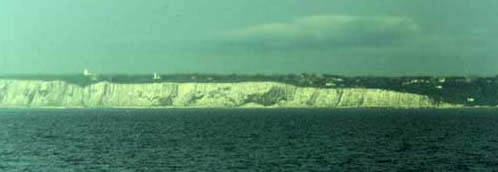Limestone
Limestone is a sedimentary rock in the class known as chemical sedimentary rocks. It is composed chiefly of calcite, CaCO3, and constitutes about 10 percent of all sedimentary rocks. Limestone may form inorganically or by biochemical processes. There are many types of limestone because of the variety of conditions under which it is produced.
Coral reefs are examples of limestone produced in the form of the skeletons of the coral invertebrate animals. Calcium-carbonate secreting algae live with the corals and help to cement the structures together. Large limestone deposits from ancient reefs are found inland, such as the exposed limestone in Guadalupe Mountains National Park in New Mexico.
Chalk is another form of biochemically produced limestone. Chalk is a soft, porous rock made up of the skeletal parts of microscopic marine organisms. It produces the white cliffs of Dover, England.

Coquina is the name given to limestone in the form of poorly cemented shells and shell fragments.
The stalactites and stalagmites in caves are mostly composed of limestone of inorganic origin. Calcium carbonate that is dissolved in the water which drips in caves may precipitate out and form limestone. Sometimes called dripstone, this limestone is more formally called travertine.
Another form of limestone of inorganic origin is oolitic limestone, limestone formed from small spherical grains called ooids. These grains form on small particles suspended in shallow marine waters. The waters may become supersaturated with calcium carbonate which may form in layers on the seed particles as they are moved by currents.
| Sedimentary Rocks |
Reference
Lutgens and Tarbuck
Ch 6
| HyperPhysics***** Geophysics | R Nave |